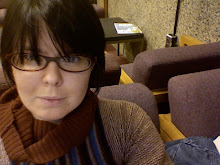 etherdome press, run by Elizabeth Robinson from Boulder, Colorado and Colleen Lookingbill from San Francisco, California produces chapbooks featuring the work of poets who have not previously published a book or chapbook. Two titles for 2008 are Anne Heide’s Specimen, Specimens and Renata Ewing’s double-bill flip-chapbook (start from either end) Somewhere Near West of Ideal and Frankenstein Poems. Chapbooks often work as a testing ground for material, and both these books seem to fit that mode. etherdome's productions are simple yet attractive.
etherdome press, run by Elizabeth Robinson from Boulder, Colorado and Colleen Lookingbill from San Francisco, California produces chapbooks featuring the work of poets who have not previously published a book or chapbook. Two titles for 2008 are Anne Heide’s Specimen, Specimens and Renata Ewing’s double-bill flip-chapbook (start from either end) Somewhere Near West of Ideal and Frankenstein Poems. Chapbooks often work as a testing ground for material, and both these books seem to fit that mode. etherdome's productions are simple yet attractive.Anne Heide lives in Denver and edits the poetry journal CAB/NET. In her chapbook Specimen, Specimens she presents pointillistic poems—the presentation of some of the verse in this collection echoes this approach to language such as the enigmatic first series of poems, such as the in the opening lines of “Specimen”:
Finger stuck in the sky if there is nothing for me here
to capture, there is nothing for me here.
From these relatively structured lines, Heide’s verse seem to break down into parts and singular utterances, such as:
A bloom pours
out of the sound I’d spoken.
A little tragedy. A fringe on the end of it.
An upright recognition.
(Apologies for the imperfect formatting...)
Evocative as this verse can be, it is also difficult to grasp at moments: such that it is difficult to ascertain if the poet intends the opening seven pages a single poem or a series. There are nice effects achieved in these pages, but this seems to be a poetry in the realm of Gertrude Stein: these words collide to make meaning; I can’t help but feel that this meaning is abstracted. Fringed tragedy, upright recognition: sometimes these abstractions leaving little for the reader to grasp.
In the second series of poems, “Specimens” Heine’s working method is contracted into smaller spaces, so concise it becomes elliptical. Small boxes of justified text, dated as if diary entries, lie alongside more traditional poems. The dated texts strike me as somewhat more successful, if only because they seem distillations of emotional information. Phrases such as “Out from my mouth is a map I’ve/ drawn hoarsely, split in half” create feeling, and Heine’s craft is obvious —but I do wish there were something concrete here to hold on to. Without an anchor, they seem ephemeral.
Renata Ewing’s poems create narratives: her Frankstein Poems draw on Mary Shelley’s work, while Somewhere Near West of Ideal draws on her family heritage to create a sonnet sequence. While overall the Frankenstein poems are a more successful collection, Somewhere Near West of Ideal contains the very good poem “New Year 2007” which opens
Undetected, he slipped back to white wine.
But when the malignant nodule lurking
like an alien egg beneath his skin
was found, he launched into full-time boozing.
Here Ewing is not so intent on perfect adherence to the sonnet form she has chosen (Shakespearean), and her half-rhymes contribute to the cohesion of the whole. The mixture of medical terminology, colloquial language and the sense of the “alien” that we feel about disease is beautifully balanced here.
In the other poems of Somewhere Near West of Ideal, Ewing is not so successful. I sense that in her adherence to the iambic pentameter and rhyme scheme of the sonnet, she cannot loosen up sufficiently, and a series of end-stopped lines undermine the effect. Not surprisingly, she doesn’t tap into the same emotional intensity when writing of her more distant relatives as when she addresses her father, whose memory the collection is dedicated to.
In Frankenstein Poems she is more successful, hopping into the narrative of Frankenstein, writing from the voices of the stories, writing outward to Mary Shelley and including a portrait of Shelley in Geneva. Her forms range from tight 3-syllable line structures to dense longer lines, and the subject matter of Shelley’s novel seems to provide her with a freedom not evident in many of the poems of the other collection included here. In “Creature to Justine (at the gallows)” she finds a slower speed in a string of single syllable words, “Twelve thing tones the church clock strikes, death’s flat chords” while in “Elizabeth” the pace quickens, with words broken over lines:
To succeed
at ambi
tion or e
vil? Of which
am I ca
pable?
The series ends with the best of all, her “Creature (alone in the Arctic) who tells us “I hunger/ hunger, still.” These poems display Ewing’s potential, and do leave the reader interested in seeing more.




